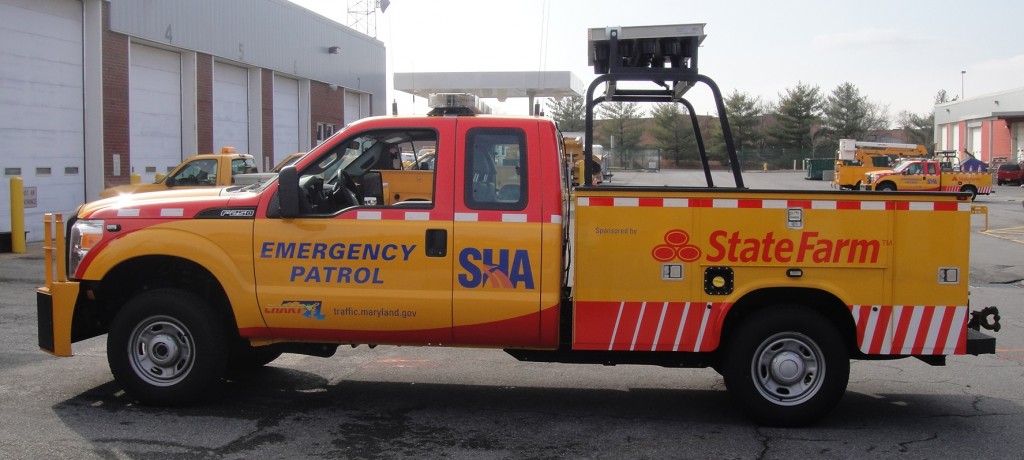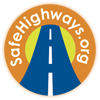Centralized with a New Addition
In Maryland, the State Highway Administration (SHA) utilizes a centralized model to operate and fund its Emergency Patrol covering the major roadways in the Baltimore metro, Frederick and Washington D.C. areas. SHA, similar to the Georgia Department of Transportation, controls all aspects of the program from training of its patrol drivers, or emergency response technicians as SHA refers to them, to providing vehicles and equipment to reporting on patrol activities.
As a result of economic budget constraints and a need for alternate solutions to meet incident management objectives, in late 2010 the MD SHA entered into a sponsorship agreement that introduced a new funding source for the Emergency Patrol program as well as a new third-party patrol operator. SHA’s centralized model would now need to incorporate both new entities without causing any disruption to its primary mission of managing traffic nor to its secondary mission to assist stranded motorists. “It is an interesting dilemma and one that we are very new to,” explains Scott Yinger, Field Operations Manager for Maryland SHA.
The funding for the pre-existing patrol continues to be provided by SHA. However, SHA also required that the sponsorship funds were to be paid directly to the new, outside operator without passing through SHA. The question of operational control and how it would work with the new third-party operator providing overlapping coverage required careful consideration.
“I think Autobase, Inc. [the selected private operator] may have been surprised by how involved we [SHA] are,” admits Yinger. To work toward its effort to maintain a centralized model, SHA involved itself in every step of the process to prepare the new patrol operator, its patrol drivers and the patrol vehicle and equipment.
“They were trained to our standard and that’s made clear in the agreement,” explains Yinger. “They wear our uniforms, they receive and review a copy of our Standard Operating Procedures, their supervisor answers to me (just as my other three supervisors do who are full time employees of SHA) and, in fact, they are included in all of the employee group functions and meetings.”
 The new privately operated vehicles (above) have the same look and design of the SHA vehicles, but with private license plates.
The new privately operated vehicles (above) have the same look and design of the SHA vehicles, but with private license plates.
Even the vehicles are wrapped to look exactly like the other patrol vehicles owned and operated by SHA and sponsored by State Farm. The only difference according to Yinger is a private license plate used on each of the privately operated vehicles.
While Autobase supplied patrol equipment for its vehicles, the state agency provided all of the communication equipment, including an in-car dash camera and an automatic vehicle locator system, to ensure standard communications between the privately operated vehicles and the SHA. This equipment not only improves the safety of the patrol driver, but it also allows SHA to continue its control over reporting on the patrol’s services, whether it be a privately operated vehicle or a state operated vehicle – they are all on one system of reporting.
Since the privately operated vehicles hit the road last March, the integration has appeared smooth and seamless. Yinger is quick to add, however, that it was not that simple. There were some “issues within SHA; this has never happened before, where someone else could don our uniform, wear our patch, and stripe a vehicle identically to an SHA vehicle.” This raised legal issues never before addressed, but, ultimately, satisfactorily hashed out in the contracts and agreements between the parties.
Beyond the legalities, Yinger advises other states interested in pursuing a private operator and maintaining a centralized model to consider some important points throughout the process. Firstly, “look at your mission and make sure everyone involved fully understands your mission.” Secondly, Yinger encourages states to clearly outline all vehicle, equipment and training requirements and to create a manageable and acceptable timeline for implementation. “In our timeline, we had only allowed for one week of training,” explains Yinger, “but we ended up training the private emergency response technicians for eight weeks in the classroom or at the track and another two to three weeks on the road with SHA’s emergency response technicians.”
Early on some of the state’s emergency response technicians questioned if this model of privately hired patrol drivers would be successful. “I have to be aggressive with rumor control,” says Yinger whose work has ensured that there are no barriers or separations between the private emergency response technicians and the state hired ones.
“I wanted everyone to be part of the SHA family.” And so far, Yinger looks to have been successful in adding to the family while still maintaining SHA as the head of the household.
